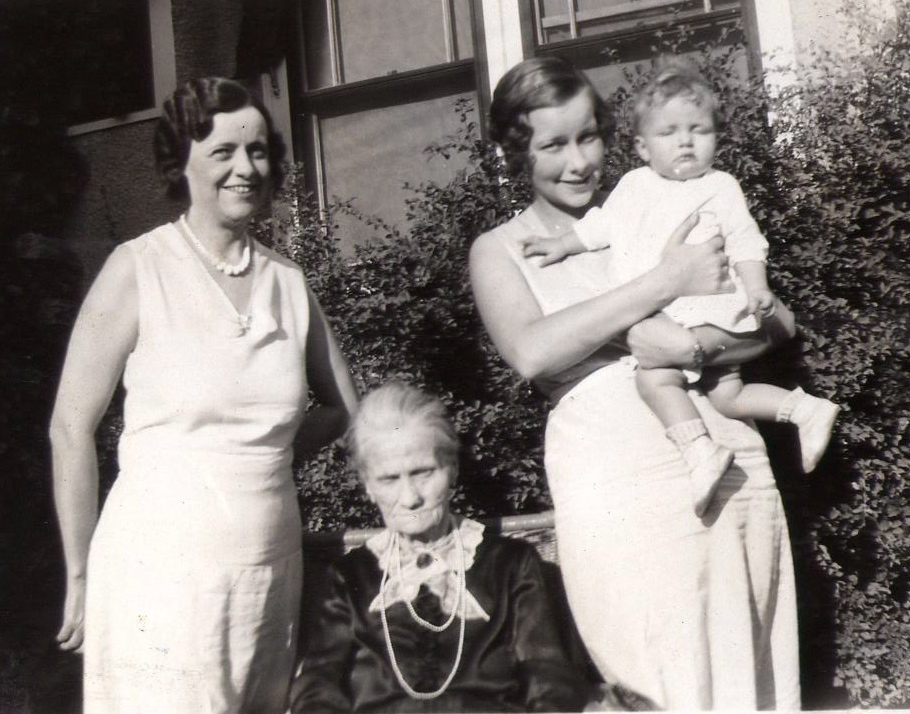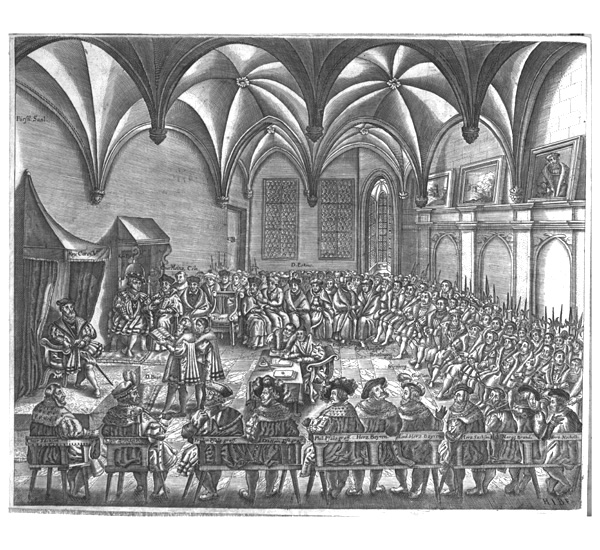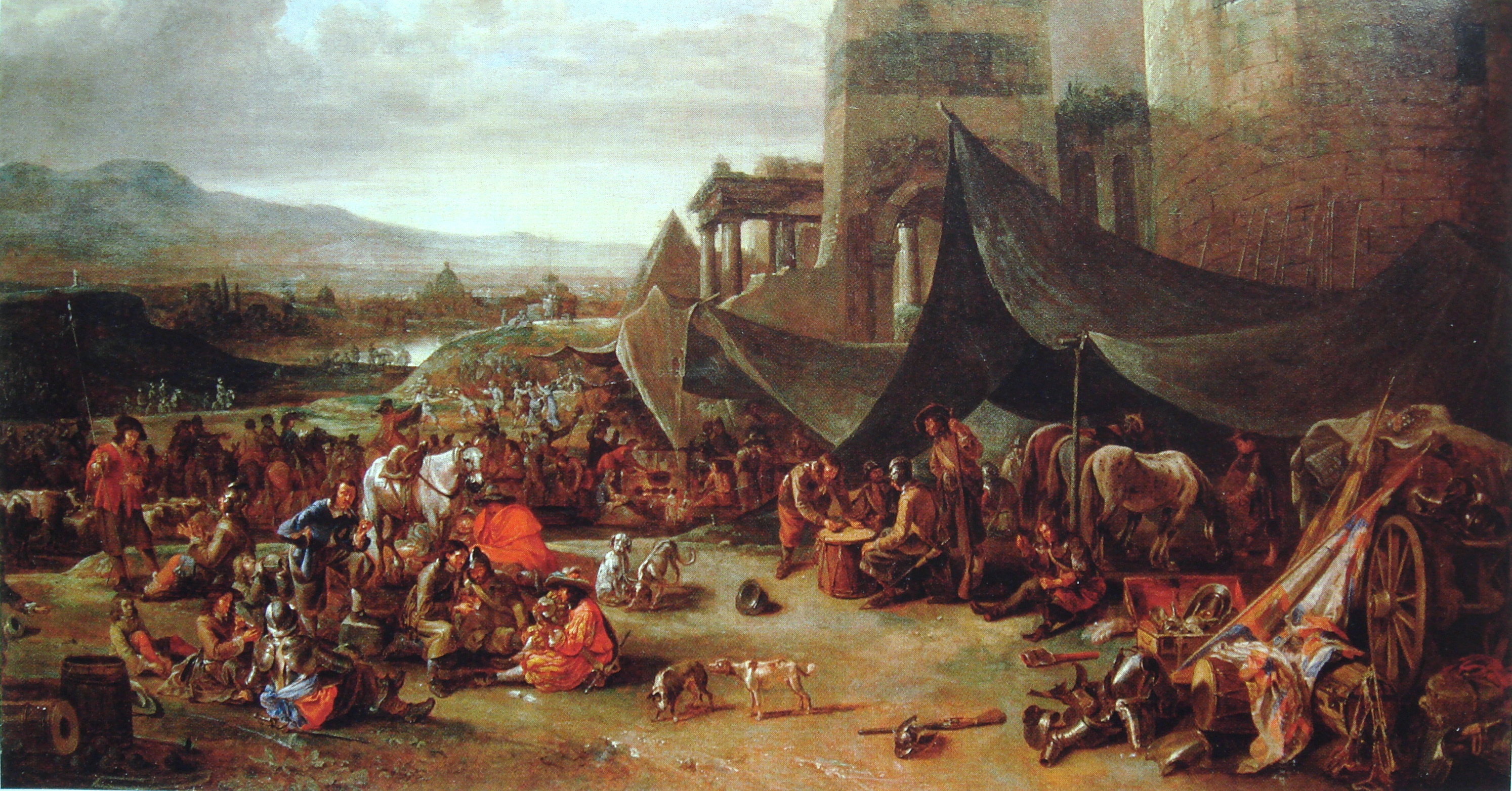|
Agnes Of Hesse
Agnes of Hesse (31 May 1527 – 4 November 1555) was a princess of Hesse by birth and by marriage Electress of Saxony. Life Agnes was a daughter of Philip I, Landgrave of Hesse, and his first wife, Christine of Saxony. She married Maurice, Duke (and later Elector) of Saxony, on 9 January 1541. From this marriage, she had two children: Anna of Saxony (23 December 1544 – 18 December 1577) and Albert (28 November 1545 – 12 April 1546). The marriage between the two was not arranged by their parents but was initiated by Maurice and Agnes themselves, which at the time was highly unusual. Their surviving letters document the continuing friendship and mutual trust between the spouses. Agnes was also informed about the political plans of her husband. After her mother Christine's death in 1549, she took on the education of her younger siblings. Elector Maurice died on 9 July 1553 from his injuries in the Battle of Sievershausen. On 26 May 1555, Agnes married her second ... [...More Info...] [...Related Items...] OR: [Wikipedia] [Google] [Baidu] |
List Of Saxon Royal Consorts
This is a list of the Duchesses, Electresses and Queens of Saxony; the consorts of the Duke of Saxony and its successor states; including the Electorate of Saxony, the Kingdom of Saxony, the House of Ascania, Albertine, and the Ernestine duchies, Ernestine Saxony. Ducal Saxony Duchess of Duchy of Saxony, Saxony * ? – 800: Geva of Westfold, wife of Widukind, daughter of the Danish king Goimo I and sister of the Danish kings Ragnar Lodbrok, Ragnar and Siegfried, d. a. 800 Ascanian Ducal Saxony Duchess of Saxe-Lauenburg Duchess of Saxe-Wittenberg Saxe-Meißen, incorporating Saxe-Wittenberg in 1547 Saxe-Thuringia, including Saxe-Wittenberg until 1547 Electorate of Saxony Electress of Saxony :''See: Electress#Electresses of Saxony, Electresses of Saxony.'' Albertine Ducal Saxony Duchess of Saxe-Weissenfels Duchess of Saxe-Merseburg Duchess of Saxe-Zeitz Ernestine Saxony Duchess of Saxe-Weimar Duchess of Saxe-Coburg-Eisenach ... [...More Info...] [...Related Items...] OR: [Wikipedia] [Google] [Baidu] |
Daughters Of Monarchs
A daughter is a female offspring; a girl or a woman in relation to her parents. Daughterhood is the state, condition or quality of being someone's daughter. The male counterpart is a son. Analogously the name is used in several areas to show relations between groups or elements. From biological perspective, a daughter is a first degree relative. The word daughter also has several other connotations attached to it, one of these being used in reference to a female descendant or consanguinity. It can also be used as a term of endearment coming from an elder. In patriarchal societies, daughters often have different or lesser familial rights than sons. A family may prefer to have sons rather than daughters and subject daughters to female infanticide. In some societies, it is the custom for a daughter to be 'sold' to her husband, who must pay a bride price. The reverse of this custom, where the parents pay the husband a sum of money to compensate for the financial burden of the woma ... [...More Info...] [...Related Items...] OR: [Wikipedia] [Google] [Baidu] |
Deaths In Childbirth
Death is the end of life; the irreversible cessation of all biological functions that sustain a living organism. Death eventually and inevitably occurs in all organisms. The remains of a former organism normally begin to decompose shortly after death. Some organisms, such as '' Turritopsis dohrnii'', are biologically immortal; however, they can still die from means other than aging. Death is generally applied to whole organisms; the equivalent for individual components of an organism, such as cells or tissues, is necrosis. Something that is not considered an organism, such as a virus, can be physically destroyed but is not said ''to die'', as a virus is not considered alive in the first place. As of the early 21st century, 56 million people die per year. The most common reason is aging, followed by cardiovascular disease, which is a disease that affects the heart or blood vessels. As of 2022, an estimated total of almost 110 billion humans have died, or roughly 94% of ... [...More Info...] [...Related Items...] OR: [Wikipedia] [Google] [Baidu] |
Albertine Branch
The Albertine branch is a German princely family of the House of Wettin. The name derives from the progenitor of the line, Albert III, Duke of Saxony. The Albertine branch ruled from 1485 to 1918 as dukes, electors and kings in Saxony. History of the Albertine Branch Ernest and Albert of Saxony, the two sons of Frederick II, Elector of Saxony, initially ruled their paternal inheritance for a long time, with Ernest as the eldest being the elector. In 1485, the two brothers divided their countries (Treaty of Leipzig). Albert and his descendants received their own territory with Dresden as the center, which they ruled from now on as the dukes of Saxony. While Frederick III, Elector of Saxony supported the Reformation, George, Duke of Saxony tried to prevent it in his area. It was not until his brother Henry IV, Duke of Saxony, who succeeded George as duke, that the Reformation was also introduced in Saxony. Acquisition of the dignity Although Maurice, Elector of Saxony was al ... [...More Info...] [...Related Items...] OR: [Wikipedia] [Google] [Baidu] |
1555 Deaths
Year 1555 ( MDLV) was a common year starting on Tuesday of the Julian calendar. Events January–March * January 22 – The Kingdom of Ava in Upper Burma falls. * February 2 – The Diet of Augsburg begins. * February 4 – John Rogers is burned at the stake at Smithfield, London, becoming the first of the 284 Protestant martyrs of the English Reformation to be killed during the five and one-half year reign of Queen Mary I of England. His death is followed within the week by that of Laurence Saunders on February 8 in Coventry, and Rowland Taylor, Rector of Hadleigh, Suffolk, and John Hooper, deposed Bishop of Gloucester on February 9. * February 26 – The Muscovy Company is chartered in England to trade with the Tsardom of Russia and Richard Chancellor negotiates with the Tsar. * March 25 – Valencia, Venezuela, is founded by Captain Alonso Díaz Moreno. April–June * April 9 – Marcello Cervini degli Spannocchi is unanimously ... [...More Info...] [...Related Items...] OR: [Wikipedia] [Google] [Baidu] |
1527 Births
Year 1527 ( MDXXVII) was a common year starting on Tuesday of the Julian calendar. Events January–March *January 1 – Croatian nobles elect Ferdinand I of Austria as King of Croatia in the Parliament on Cetin. * January 5 – Felix Manz, co-founder of the Swiss Anabaptists, is drowned in the Limmat in Zürich by the Zürich Reformed state church. *February 14 – Queen consort Mary of Hungary, named as regent for the kingdom upon the August 29 death of her husband Louis II, asks permission from the Hungarian Diet to step down as the regent for the newly elected Frederick of Habsburg, but is denied. *February 21 – The Mughal–Rajput wars begin in India between the Emperor Babur of the Mughal Empire and states of the Rajput Confederacy, with the victory of the Rajput faction at the Battle of Bayana. *February 24 – **Ferdinand of the House of Habsburg is formally crowned as King of Bohemia at Pressburg (now Bratislava in Slovakia). **The ... [...More Info...] [...Related Items...] OR: [Wikipedia] [Google] [Baidu] |
Countess Palatine Elisabeth Of Simmern-Sponheim
Elisabeth of the Palatinate (; 30 June 1540 in Birkenfeld – 8 February 1594 in Wiener Neustadt) was the second wife of John Frederick II, Duke of Saxony. Life Elisabeth was born in Birkenfeld, the daughter of Frederick III, Elector Palatine, and his wife, Marie of Brandenburg-Kulmbach. Elisabeth was the third child of the couple and the second to reached adulthood. On 12 June 1558 in Weimar, Elisabeth married John Frederick II, Duke of Saxony, eldest son of John Frederick I, Elector of Saxony. He selected Grimmenstein Castle (the predecessor of Friedenstein Castle) in Gotha as their residence. During the Gotha War, Augustus, Elector of Saxony, besieged Gotha and Grimmenstein Castle and conquered them on 13 April 1567. John Frederick was taken prisoner and would spend the rest of his life (29 years) in imperial captivity. He was brought to Dresden and in June 1567 to Wiener Neustadt. Elisabeth and her children fled to Eisenach and then to her sister Dorothea Susanne of Simm ... [...More Info...] [...Related Items...] OR: [Wikipedia] [Google] [Baidu] |
Anne Of Denmark, Electress Of Saxony
Anne of Denmark ( Danish and German: Anna; Haderslev, 22 November 1532 – Dresden, 1 October 1585) was a Danish princess from the House of Oldenburg. Through her marriage with Augustus of Saxony she became Electress of Saxony. She was renowned for her knowledge of plants and her skill in the preparation of herbal remedies, and contributed to the development of farming and horticulture in Saxony. She was a major influence in the introduction of orthodox Lutheranism and played a role in the decision to persecute Calvinists. Childhood Anne of Denmark was a daughter of King Christian III of Denmark and Norway and his wife Dorothea of Saxe-Lauenburg. Her mother taught her the basic principles of gathering medicinal plants and preparing herbal remedies. After the introduction of Protestantism in Denmark-Norway in 1537, she was raised as a strict orthodox Lutheran. In March 1548 she became betrothed to Augustus of Saxony, the younger brother and possible heir of Elector Maurice ... [...More Info...] [...Related Items...] OR: [Wikipedia] [Google] [Baidu] |
Sybille Of Cleves
Sibylle of Cleves (17 January 1512 – 21 February 1554) was electress consort of Saxony. Born in Düsseldorf, she was the eldest daughter of John III of the House of La Marck, Duke of Jülich ''jure uxoris'', Cleves, Berg ''jure uxoris'', Count of Mark, also known as de la Marck and Ravensberg ''jure uxoris'' (often referred to as Duke of Cleves) who died in 1538, and his wife Maria, Duchess of Julich-Berg (1491–1543). Her younger siblings were two sisters, Anne (later Queen of England) and Amalia, and a brother, William, who became Duke of Jülich-Cleves-Berg. Life Early life Sibylle and her sisters were raised in the Frauenzimmer, the chambers where the duchess Maria and her entourage consisting of female relatives and attendants lived a sort of semi-cloistered existence. No male over the age of twelve was admitted, and at night the women were locked in, the key held by a trusted court official. Unlike her brother William who was well-educated, Sibylle and her si ... [...More Info...] [...Related Items...] OR: [Wikipedia] [Google] [Baidu] |
Catherine Of Mecklenburg
Catherine of Mecklenburg (1487 – 6 June 1561, Torgau), was a Duchess of Saxony by marriage to Henry IV, Duke of Saxony. She was the daughter of the Duke Magnus II of Mecklenburg and Sophie of Pomerania-Stettin. Life She married on 6 July 1512 in Freiberg Duke Henry the Pious of Saxony. Catherine sympathized early with Martin Luther's teachings, while her husband suppressed the Reformation until 1536 for fear of his brother, the reigning Duke George the Bearded. Later, the Freiberg area became Lutheran. When duke George tried bear down on Catherine, she told the envoy: ''You could do me a big favor by leaving Freiberg right now''. In 1539, after the death of Duke George, the couple moved to Dresden and brought the Reformation there. Duke Henry died on 18 August 1541; Catherine outlived him by 20 years. She spent her days in Wolkenstein castle. In 1560, she published a book on etiquette for ladies, which is culturally and historically very interesting. Issue She had s ... [...More Info...] [...Related Items...] OR: [Wikipedia] [Google] [Baidu] |





